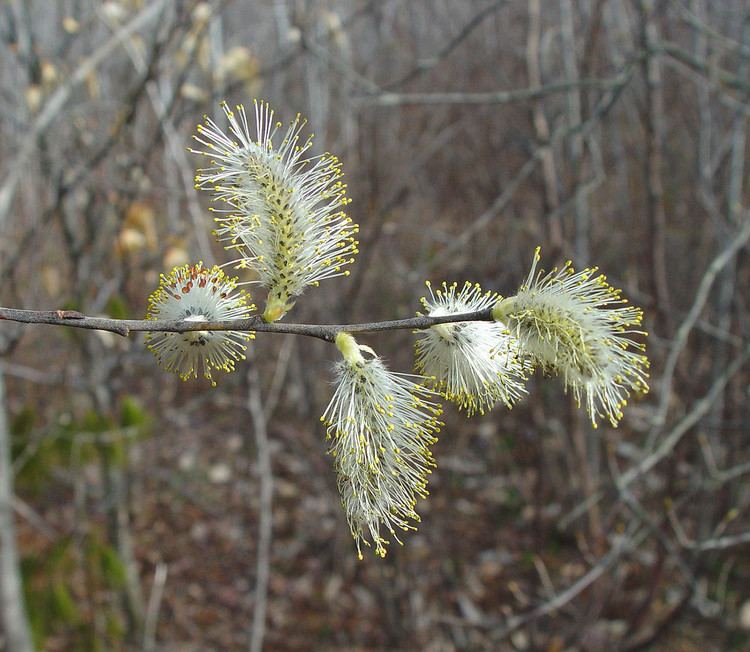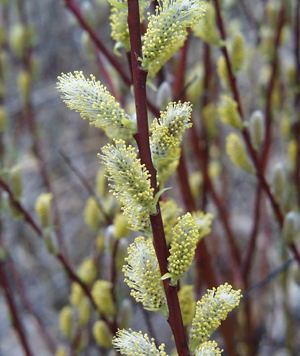Scientific name Salix discolor | Genus Salix Rank Species | |
 | ||
Similar Salix bebbiana, Salix exigua, Salix lucida, Salix amygdaloides, Salix eriocephala | ||
Salix discolor, the American pussy willow or glaucous willow, is a species of willow native to North America, one of two species commonly called pussy willow.

It is native to the northern forests and wetlands of Canada (British Columbia east to Newfoundland), and is also found in the northern portions of the contiguous United States (Idaho east to Maine, and south to Maryland).

It is a weak-wooded deciduous shrub or small tree growing to 6 m (20 ft) tall, with brown shoots. The leaves are oval, 3–14 cm long and 1-3.5 cm broad, green above and downy grey-white beneath.

The flowers are soft silky silvery catkins, borne in early spring before the new leaves appear, with the male and female catkins on different plants (dioecious); the male catkins mature yellow at pollen release.

The fruit is a small capsule 7–12 mm long containing numerous minute seeds embedded in cottony down.
Cultivation and uses
Like other willows, it contains salicin, and was used by Native Americans as a painkiller.

As with the closely related Salix caprea (European pussy willow), it is also often grown for cut flowers. Pussy willow has further cultural information and other uses.
